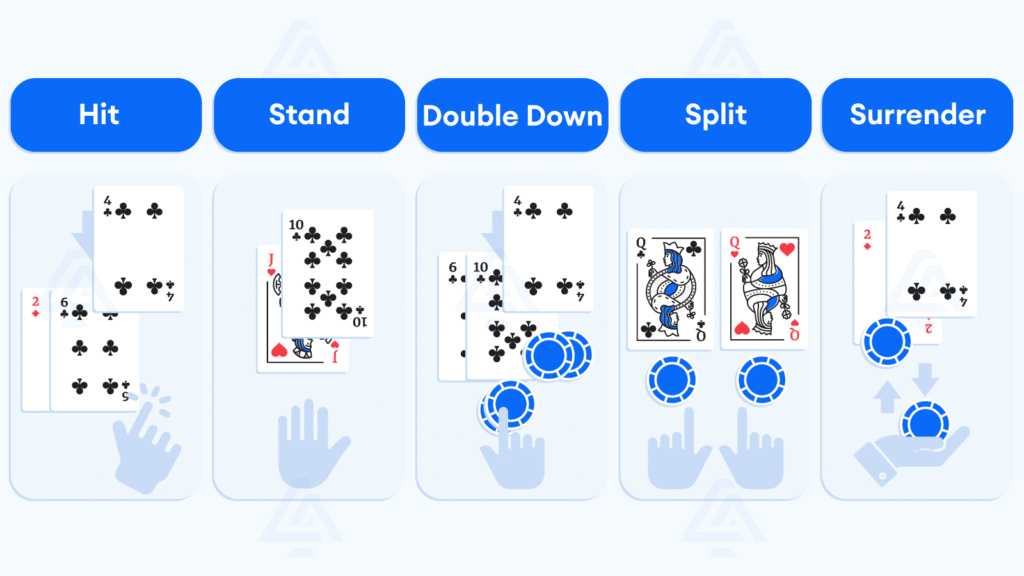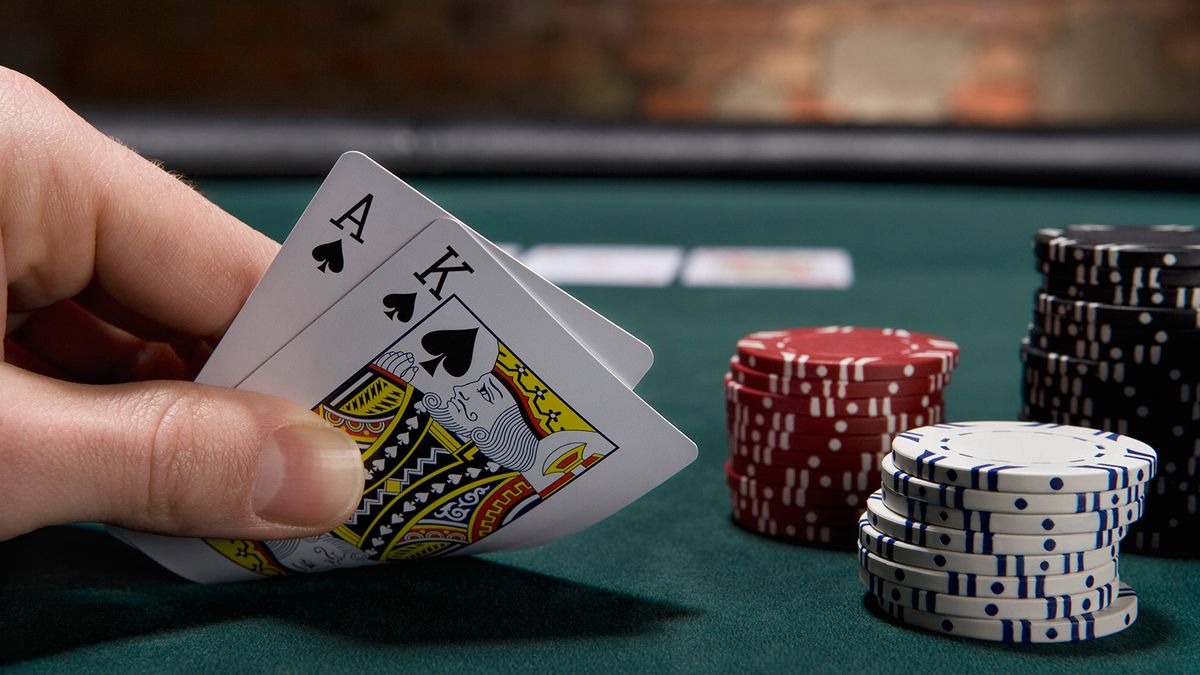Blackjack is one of the most popular casino games in the world—for good reason. It’s simple, exciting, and offers some of the best odds in the house. Whether you’re playing in a Las Vegas casino or from your couch with an online dealer, learning how to play blackjack gives you a serious edge in a game that rewards both luck and skill. In this detailed guide, we’ll cover every essential: how the game works, what choices to make, strategies to boost your chances, and what traps to avoid. Get ready to sit down at the table with confidence and play like a pro.
Quick Navigation
Blackjack Basics: The Goal of the Game

The aim in blackjack is straightforward: get your card total as close to 21 as possible—without going over—and beat the dealer’s hand. Cards 2 through 10 are worth their face value. Jacks, Queens, and Kings count as 10. Aces can be worth either 1 or 11, depending on which is more favorable for your hand.
Example: A hand with an Ace and a 9 equals 20 (called a “soft 20”). If your next card is a 5, the Ace drops to 1, making the hand total 15 instead of busting.
If your total exceeds 21, it’s called a bust—and you lose the hand automatically.
The Blackjack Table & Card Dealing Process
Most blackjack tables accommodate 5 to 7 players plus a dealer. The game uses 1 to 8 decks of standard 52 cards. Cards are shuffled and dealt from a “shoe.” Each player places a bet before the round starts.
Here’s how dealing works:
- Players receive two cards face up.
- The dealer also receives two cards—one face up, one face down (the “hole card”).
- All decisions are made before the dealer reveals their second card.
Your Options: Hit, Stand, Double Down, Split, or Surrender

Once you see your first two cards, you’ll choose what to do next. Your options are:
- Hit: Take another card.
- Stand: Keep your current hand.
- Double Down: Double your original bet, take one more card, and then stand.
- Split: If you’re dealt a pair (e.g., two 9s), you can split them into two hands.
- Surrender: Forfeit your hand to get half your bet back (available in some casinos).
Mastering when to use each option is key to reducing the house edge and maximizing your chances.
Dealer Rules: Set in Stone
The dealer has no decisions to make—they follow fixed rules:
- Must hit on 16 or less.
- Must stand on 17 or higher (some games require the dealer to hit a “soft 17,” which includes an Ace counted as 11).
These rules eliminate guesswork for the dealer and provide smart players with an opportunity to apply a solid strategy against predictable play.
Winning the Hand & Blackjack Payouts
You win if your hand is closer to 21 than the dealer’s—or if the dealer busts. Payouts are as follows:
- Standard win: Pays 1:1 (a $10 bet earns $10).
- Blackjack: A natural 21 from your first two cards (Ace + 10-value card) pays 3:2 (a $10 bet earns $15).
- Push: If you tie with the dealer, your bet is returned.
Be cautious of tables offering only 6:5 payouts on blackjack—that change significantly increases the house edge.
What Is a Blackjack? Why 3:2 Payout Matters

A “blackjack” is the most valuable hand you can get in the game—it’s when your first two cards total exactly 21, achieved with an Ace and any 10-point card (10, Jack, Queen, or King). Not only is this hand unbeatable unless the dealer also has a blackjack, but it also earns you a better payout.
Instead of a regular 1:1 payout (where a $20 win gives you $20), a blackjack pays 3:2, so that same $20 bet wins you $30. However, some casinos offer only 6:5 blackjack payouts, where your $20 bet would earn just $24—a significant downgrade that increases the house edge.
That’s why seasoned players strongly recommend finding tables that offer 3:2 payouts. It’s one of the easiest ways to ensure you’re getting the best value for your wins. Anything less should be considered a red flag and avoided whenever possible.
Common Side Bets & Variants to Be Cautious Of
Many blackjack tables include optional side bets:
- Insurance: Pays 2:1 if the dealer has blackjack when showing an Ace—but long term, it’s a losing bet.
- 21+3 or Perfect Pairs: Bets based on poker-style combinations or matched cards. Exciting, but high house edge.
Games like Spanish 21 or Blackjack Switch alter core rules and usually favor the house more than standard blackjack. Best to avoid unless you’re familiar with the odds.
Use a Basic Strategy Chart
The smartest way to play blackjack is by using basic strategy—a mathematically proven chart that tells you the best move in every situation based on your hand and the dealer’s upcard.
Examples:
- Hand: 12, Dealer shows 4 → Stand
- Hand: 10, Dealer shows 9 → Double Down
- Pair of 8s → Always Split
Using basic strategy can reduce the house edge to under 1%.
Need help staying disciplined? Check out our Gambling Budget Guide.
Online Blackjack: Play Anytime, Anywhere
You can play blackjack online in two primary formats:
- RNG (Random Number Generator): Software-based, instant-play.
- Live Dealer Blackjack: Real cards dealt by a human, streamed to your screen.
Live dealer games are more immersive, but both formats use the same rules and offer great low-stakes fun.
Can you play for real money? Yes. Many legal online casinos and sweepstakes sites offer blackjack with cash or prizes.
Browse our top picks in the Best Sweepstakes Casinos.
Can You Make Money Playing Blackjack?
If you follow basic strategy, play low-house-edge tables, and avoid bad bets, yes—you can have profitable sessions. Some players even count cards in physical casinos to gain an edge.
However, don’t rely on blackjack as a steady income. Play smart, have fun, and never bet more than you’re willing to lose.
Want to stay safe? Visit Responsible Gambling Tips for long-term success.
Frequent Mistakes Beginners Make
Even confident beginners can fall into these costly traps:
- Taking insurance every time: While it seems like a safety net, insurance is statistically a bad bet over the long term. It’s better to decline it unless you’re an advanced card counter.
- Hitting 12 vs. Dealer’s 6: Many newbies panic and hit here, but you’re better off standing. The dealer has a high chance of busting when showing a 6.
- Not knowing when to double down: Doubling down at the right time (like holding 10 vs. dealer 9) is a high-value play. Ignoring these moments leaves money on the table.
- Playing 6:5 tables: Avoid these tables like the plague. The payout reduction from 3:2 to 6:5 may seem small, but it gives the house a much bigger edge.
- Chasing losses without a bankroll limit: This is where the most damage happens. Set a loss limit and walk away when it’s reached.
Avoid these common errors and you’ll set yourself up for a more successful, strategic blackjack experience.
Blackjack FAQs

How much does $100 blackjack pay?
$150 on 3:2 tables; only $120 on 6:5 tables.
Can I split 10s?
Yes, but it’s rarely a good idea. A 20 is a strong hand—don’t break it unless you’re counting cards and know something most players don’t.
Is blackjack beatable?
With perfect basic strategy—yes, over the short term. Long term, the house still has an edge unless you’re counting cards consistently.
What are the best hands to double on?
Usually when you hold 9, 10, or 11 and the dealer shows a weak card (like 3 through 6).
What’s a push?
A tie with the dealer—you don’t win, but you also don’t lose your bet.
Do blackjack apps work?
Yes! Many legit apps let you practice for free or with micro-stakes. They’re perfect for memorizing basic strategy and testing your skills risk-free.
Final Tips for Blackjack Success
- Memorize basic strategy—it’s your #1 weapon and dramatically lowers the house edge.
- Always check the payout structure before sitting down. Look for 3:2 blackjack payouts and avoid 6:5 tables.
- Practice online for free to build confidence and get familiar with game variations before risking real money.
- Avoid distractions and stay focused during play. Treat blackjack like a mental challenge, not just entertainment.
- Stick to your limits. Set a strict bankroll before you play, and walk away while ahead or when you’ve hit your loss threshold to protect your winnings and minimize losses.
Final Thoughts: Blackjack Is a Game of Smart Decisions
Now that you’ve learned how to play blackjack, you’re equipped with the tools and knowledge to make smarter decisions at the table—whether you’re in a live casino or playing online. By understanding the rules, applying basic strategy, and managing your bankroll, you can turn each session into an opportunity to play with confidence and reduce the house edge.
Keep practicing what you’ve learned and refine your gameplay over time. Remember, blackjack rewards patience and discipline far more than risky moves or guesswork. Take advantage of free apps or online demos to sharpen your strategy before hitting the tables with real money.
If you’re ready to take the next step, keep improving with our full library of Online Gambling Guides, and discover top-rated casinos and live blackjack games on our homepage.

